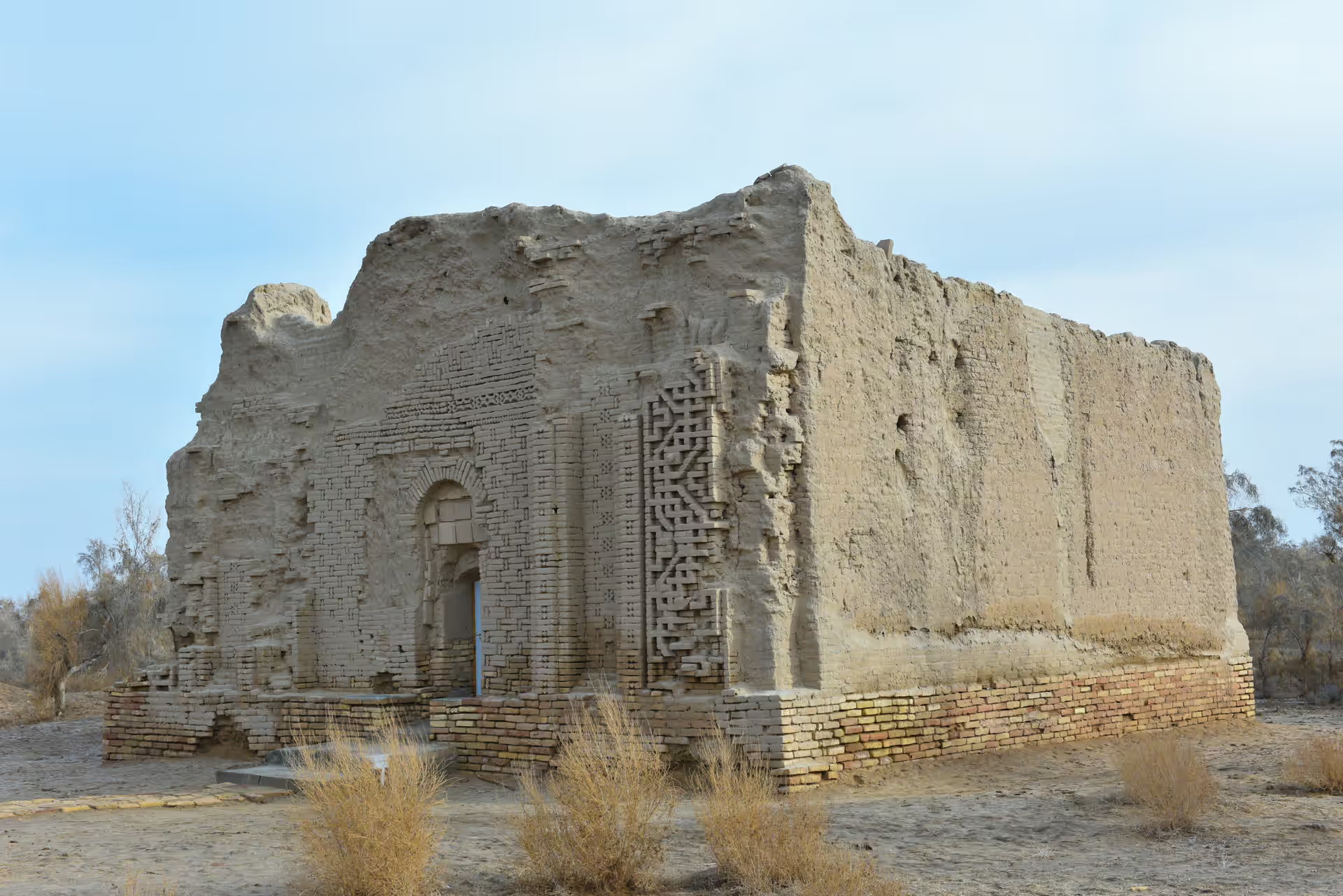
Khudaynazar Ovliya Mausoleum — The Silent Guardian of Ancient Merv
About This Destination
The Mausoleum of Khudaynazar Ovliya, located 25 kilometers north of the ancient city of Sultan Kala in the Mary Region, dates back to the first quarter of the 12th century. It represents the Seljuk era’s spiritual and architectural traditions, belonging to the type of domed mausoleums without portals, distinguished by their elegant brick decoration and precise geometric design.
History
The monument bears resemblance to Mohammad ibn Ziyad’s Mausoleum in Merv, another masterpiece of the same period. Both structures reflect the artistic harmony and craftsmanship that flourished during the Seljuk Golden Age, when Merv was one of the great cultural centers of Khurasan — a city renowned for its prosperity, learning, and tolerance. In 1221, Merv — once “the finest and most flourishing city of Khurasan” — was destroyed by the Mongols, ending its golden age. Later, during the Timurid period, Merv was partially revived under Mirza Sanjar, Timur’s descendant, who founded new fortified cities such as Khan Kala and Abdullah Khan Kala. For centuries, Merv was not merely a caravan stop, but a beacon of civilization — home to Zoroastrians, Buddhists, and Christians before becoming a capital of the Seljuks under Sultan Sanjar in 1037. From the Parthian Empire to the Sassanids, from Arab Caliphs to Turkmen dynasties, Merv stood as a bridge between Persia and Central Asia, where cultures met and flourished. Amid these shifting empires, the Khudaynazar Ovliya Mausoleum endures — a humble yet powerful testament to the faith, art, and endurance of Turkmen civilization.
Tours Available
Quick Info
Plan Your Visit
Need Help?
Our travel experts are here to help you plan the perfect trip
